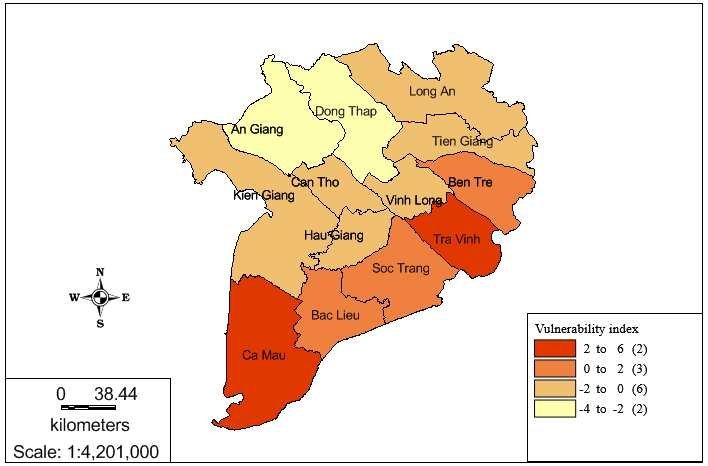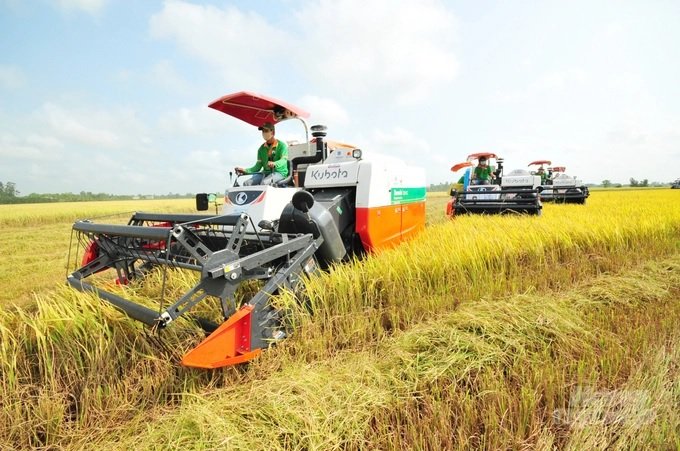As the seasons shift, a once-reliable region for agriculture faces new hurdles. The Mekong Delta, known for its rice cultivation, is feeling the strain from climate variability.
Rising temperatures can create stress for crops, which usually flourish in stable environments.
Extreme weather events like floods and droughts are showing up more frequently, leaving farmers with unpredictable outcomes.
Changes in rainfall patterns are making it tough to nail down planting and harvesting schedules, complicating things for those who depend on them. Salinity intrusion is another concern, as it damages soil health and diminishes productivity. With these agricultural impacts surfacing in the Mekong Delta, rice cultivation is increasingly threatened by climate variability and salinity intrusion.
Impact Of Climate Variability On Rice Cultivation
Farmers are grappling with a range of challenges these days, especially with the unpredictable nature of weather patterns. The impact of these shifts on crop yield is significant, making it essential for producers to adapt.
Even a slight increase in temperature, like 2°C, can lead to a staggering 20% drop in production levels.
Water availability is another pressing issue.
With changing rainfall patterns, there’s a heightened risk of drought during the dry season, while severe storms can sharply increase flood risk. Many farmers are now exploring adaptive strategies to cope with these environmental changes.
Embracing innovative techniques is becoming more common as they strive for sustainable rice production under increasingly difficult circumstances.
Understanding Salinity Intrusion In Mekong Delta
The Mekong Delta is facing pressing issues as salty seawater begins to affect its vital freshwater sources. This shift is often driven by rising sea levels and irregular rainfall patterns.
Farmers in this region find themselves grappling with water management challenges, as crops struggle to thrive in the increasingly saline environment.
Soil degradation becomes a real concern, leading to reduced yields and causing food insecurity for communities reliant on agriculture.
For example, rice yields could plummet in the most affected areas, which places immense pressure on local farmers. To tackle these obstacles, communities are innovating with sustainable farming practices and exploring better irrigation systems. These strategies not only aim to mitigate the adverse effects of salinity but also seek to preserve biodiversity, ensuring that both the environment and agriculture can coexist, while promoting sustainable farming practices that enhance water management, combat soil degradation, reduce biodiversity loss, and limit pest outbreaks.
| Issue | Impact |
|---|---|
| Salty seawater intrusion | Affects vital freshwater sources |
| Soil degradation | Reduced crop yields and food insecurity |
| Innovative farming practices | Mitigate salinity effects and preserve biodiversity |
| Better irrigation systems | Enhance water management and combat soil degradation |
Flood Risk: How Does It Affect Harvest Timing
When it comes to farming, weather conditions can really shake things up, especially when it rains heavily. Flooding can lead to major shifts in when crops can be harvested.
For farmers, being aware of the timeline for planting ahead of wet weather is key.
As heavy rains soak the soil, it can delay plant growth and, in turn, push back the time for harvesting.
Floods can disrupt crucial stages of crop development, causing even more unpredictability. Crop readiness often varies due to water levels influenced by temperature rise and the ongoing shifts in weather patterns.
It’s important for farmers to adapt their irrigation techniques to tackle these challenges head-on. Keeping a close watch on conditions can help align harvest times with the natural development of crops and safety standards. The unpredictability of flood patterns can really complicate efforts to manage water resources effectively, especially in the face of temperature rise, greenhouse gases, land use changes, irrigation techniques, and their socioeconomic effects.
Drought Resilience: Keys To Sustainable Farming
Farmers are facing all sorts of unpredictable weather these days, making it crucial to adapt their practices for long-term success. Sustainable strategies not only help maintain food security but also conserve our natural resources for future generations.
When farmers implement effective techniques, they can nurture their agroecosystems and strengthen their capacity to cope with dry spells.
A solid approach starts with soil management.
Incorporating organic matter into the soil enhances moisture retention, making it easier for crops to thrive even under stress.
Choosing drought-resistant crop varieties is another game changer; this ensures that yields remain viable during trying times. Employing efficient irrigation techniques optimizes water usage and boosts productivity, allowing farmers to make the most out of every drop.
| Practice | Benefit |
|---|---|
| Soil Management | Enhances moisture retention |
| Drought-Resistant Crop Varieties | Ensures viable yields during dry spells |
| Efficient Irrigation Techniques | Optimizes water usage and boosts productivity |
Environmental Changes And Their Effects On Crop Yield
Farmers are facing a new reality as our planet continues to change, shaping the way we think about farming. With fluctuations in climate, we notice unpredictable shifts in temperature and rainfall, impacting local communities.
Soil health is a big player in this game; poor soil quality can lead to a drop in crop performance.
For example, rice varieties grown in areas most vulnerable to these changes are increasingly at risk.
Innovative approaches in nutrient management can aid farmers in adapting their strategies. Adjusting harvest timing is also key; it allows for better alignment with the new environmental calendar.
These proactive measures can help ensure that crops thrive despite the disruptions we’re witnessing in the ecosystem. Transitioning from understanding drought resilience to exploring how local communities adapt through the use of diverse rice varieties, effective nutrient management, and optimal harvest timing amidst ecosystem disruption.
Innovative Irrigation Techniques For Climate Adaptation
As farmers face the realities of changing weather patterns, new watering approaches are stepping up to make a real difference. For instance, techniques like drip irrigation deliver water directly to the roots, which not only cuts down on waste but also ramps up efficiency.
This method is transforming agricultural research, allowing farmers to optimize their yields while conserving precious water resources.
Across various agroclimatic zones, these advancements enable crops to withstand stress from environmental shifts.
Government policies are increasingly supporting these innovations, fostering sustainable practices in the farming sector. Embracing these modern irrigation methods is becoming vital for thriving in the evolving landscape of agriculture
Modern Irrigation Techniques
- Drip irrigation can reduce water usage by up to 50% compared to traditional methods.
- Crops irrigated with advanced techniques can yield up to 30% more produce.
- Government initiatives are increasingly funding research and implementation of sustainable irrigation practices.
- Modern irrigation methods help crops adapt to changing weather patterns and environmental stressors.
Exploring Biodiversity Loss In Rice Agriculture
The health of our rice fields goes hand in hand with the variety of life they support. Biodiversity acts like nature’s safety net, crucial for maintaining pest resistance and soil quality.
When different species thrive together, they create a balanced ecosystem, helping with nutrient cycling and ultimately driving productivity.
A lack of diversity can lead to increased pests and deteriorating soil health.
Interestingly, studies indicate that fields rich in variety can yield up to 10% more than those with just one crop type. It shows that diversity isn’t just a nice-to-have—it’s a cornerstone for fruitful harvests and resilient farming communities.
Shifting our focus a bit, let’s consider how climate factors affect our cherished rice varieties. Weather changes are not just mere inconveniences; they can disrupt the delicate balance of floodplain ecosystems, affecting pest resistance, erosion control, and climate resilience while increasing our carbon footprint.
Economic Resilience: Local Communities And Climate Challenges
When it comes to facing the waves of climate change, local farming communities often find themselves at the forefront of resilience. Agricultural sustainability practices play a significant role in helping these communities bounce back from setbacks.
Strong local economies enable farmers to tackle the unpredictable nature of our changing climate, ensuring they can protect their livelihoods.
Take rural development strategies, for instance.
They frequently incorporate integrated agronomic practices that promote sustainability, allowing farmers to adapt to various conditions. This support fosters crop diversification, reducing reliance on single crops and enhancing food security.
Amid climate adversity, the creativity and collaboration of local communities can lay the groundwork for a thriving agricultural future.
The impact of climate change is particularly pronounced in agriculture, with local farmers feeling its effects deeply. Around 70% of agricultural sustainability initiatives focus on promoting agronomic practices, enhancing rural development, advocating for organic farming, and encouraging crop diversification.
Agricultural Sustainability
- Local farming communities are essential in building resilience against climate change.
- Around 70% of agricultural sustainability initiatives emphasize agronomic practices and crop diversification.
- Integrated agronomic practices enhance rural development and food security.
- Collaboration within communities fosters creativity and innovation in adapting to climate challenges.
Conclusion
Addressing the future of rice production in the Mekong Delta reveals some compelling insights. The shift in seasonal patterns is really making waves, impacting how reliable yields can be.
To tackle this, farmers are turning to precision agriculture, using smart technology to fine-tune their resources.
This shift not only boosts productivity but also enhances their ability to adapt to environmental changes.
Meanwhile, rainfed systems are facing their own set of hurdles, but we’re seeing breakthroughs in integrated pest management that are helping to turn the tide. Moving forward, the collaboration between local communities and policymakers will be key to sustaining rice farming in this region, ensuring that everyone can thrive despite the unpredictable climate ahead




